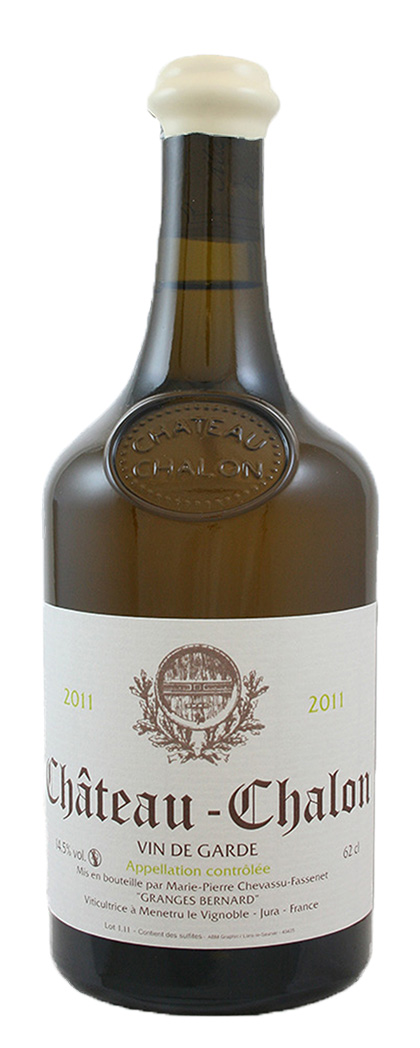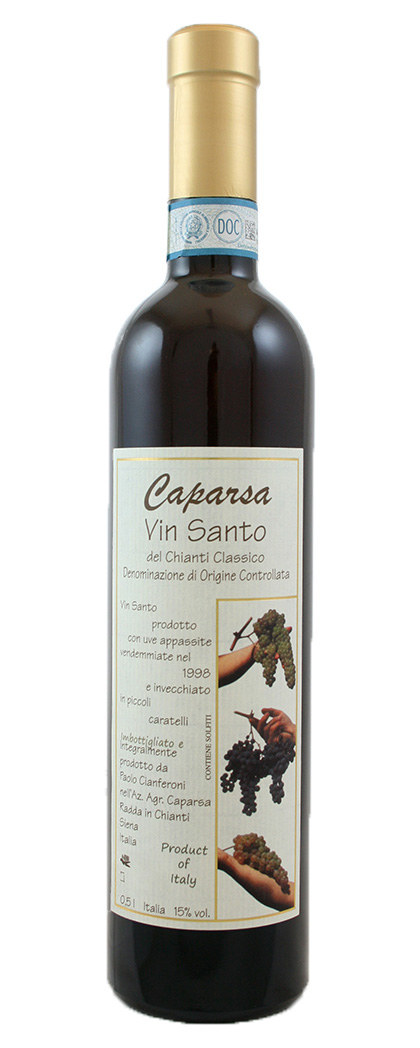Networking with O2
When I let go of what I am, I become what I might be ~ Lao Tzu
Only those who will risk going too far can possibly find out how far one can go ~ T. S. Eliot
“All the wines out there were oxidised.” Every syllable of the word oxidised was rolled with magnificent contempt by a master of wine, furiously channelling Edith Evans’s Lady Bracknell, and uttered at The Natural Wine Fair a decade ago.
We speak confidently about faults and flaws and yet these are not cut-and-dried issues. Wines that are truly oxidised (maderised, if white) are dying the moment they hit the glass. They are brown, rusty, musty and lifeless. Or weary, stale, flat and unprofitable, if you feel like quoting Hamlet. Wines where oxygen is a factor in the elevage – either overtly (think of the rancio Banyuls and Maurys of the Roussillon, traditional yellow wines from Jura, Oloroso from Jerez, Madeira, Marsala and classic Vernaccia di Oristano), or more subtly, (think Loire Chenin, Chateau Musar Blanc, some white Riojas, Med whites aged in demi-muids or foudres, and northern Italian whites and Istrian wines with a certain amount of skin contact) – not only last, but improve considerably over the course of time. Whilst I may enjoy uncomplicated fresh wines – they are as snapshots of bright fruit – I also appreciate the profound qualities of oxidative wines which are like paintings with a rich impasto of texture.
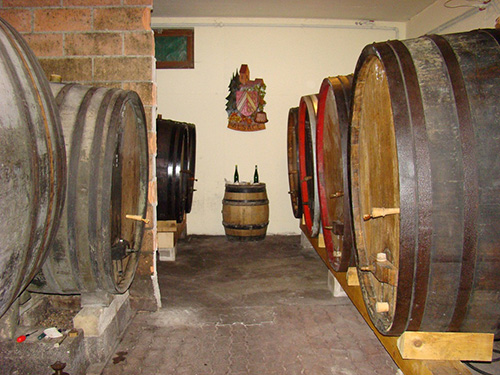
Yes, oxygen contact may confer fascinating secondary notes and layers of vinous flavour – it can help to soften and enrich the wine and bring forth aromas of honey, truffle, walnut, cooked pastry, humus, spice and toast, those seductively complex integral liaisons of smell and flavour that persuade one to return over the period of several days and discover something new in every sniff and slurp.
Yesterday, I drank a beautiful natural wine that was fresh, utterly vibrant and charming beyond belief. Throbbing with health, the flavours were clean and crunchy, the palate full of sap and zip with a trace of graphite minerality bringing the wine to an exhilarating close. This was real grapes-to-bottle stuff sans funk. This was an oxidative, low-sulphur wine. Cue reeling and writing and fainting in coils & general disbelief from sceptics. Yet I would venture that no-one would find such a wine remotely objectionable, and once enough people acknowledge that natural low-intervention wines are not only not “off”, but can be deliciously flavoursome, then we will have advanced the tenor of the debate.
Stefano Bellotti from Cascina degli Ulivi explains how this might be achieved.
“The other way we can do without sulphites is following the natural way of wine making using “managed oxidation” where oxidation is no longer viewed as a monster to fight but as a friendly component of wine. But this is only possible when using grapes of excellent quality. No yeasts, no enzymes, no vitamins, no salts. A natural fermentation and a careful use of lees. Lees contain many colloids that have an anti-oxidant and protective function but to do so, one needs to vinify in wood and that entails more effort and higher costs.
By using this method I have always produced red wines with no sulphites and a guaranteed stability of decades and lately I have also managed to produce white wines with no sulphites added that not only they are stable, but have – if anything – the opposite problem: they need a couple of years in a bottle to reach optimum harmony, a quality that they will maintain for several years thereafter.”
“Reaching harmony.” Slow and fluidic elevage yields wines that are not fixed fruit-bombs instead unveiling their personality by degrees. Mutability, in my book, is to be celebrated – glasses one to five give you a thoroughly different experience as the wine moves and changes shape. Oxygen aids this process – a wine may not be oxidised if the addition of air enables it to articulate its nuances rather than rudely terminating the fruit. Yes, it serves as a kind of “inoxulation”.
Decent Exposure
Meanwhile, numerous misconceptions abound about low-sulphur wines. One is that they can’t age because, deficient in sulphur preservative, they are unarmed to combat the process of natural decay. Whilst it is true that some wines are intended to be drunk in the freshness of youth (and are usually protected during their vinification by a layer of CO2), others have the wherewithal to last, having an in-built defence mechanism against oxidising: one thinks of wines made by Giulio Armani, Dario Princic, Frank Cornelissen, Josko Gravner, Stanko Radikon and Emmanuel Houillon – to name but a few. As difficult and ornery as the wines may be when first poured, exposing them to air usually reanimates them. First impressions are not always reliable either. I can adduce numerous examples of wines that most experienced tasters would logically write off as undrinkable, which, after a day – or three days – or five –find their natural balance. The proof of this particular counter-intuitive pudding is in the tasting. The wines are living things that evolve in their own time. It is often said that what doesn’t kill them makes them stronger. In these cases, due to O2, they have constitutions as strong as an ox.
The most obvious examples are to be found in the Jura where vignerons may either “top up” their wines or leave them to age under a veil of yeast. Because Jura is the spiritual home of the sous-voile style, and because these wines can age for decades, they are rightly cherished. Nevertheless, certain cognoscenti notwithstanding, they (the wines) are often seen as quaint ’n’ quirky period pieces.
Ox in and out of the box ~ The Arc of Jaune
What quirky wines! Cut yourself some nutty nutty slack and, if you’re suffering sotolon deficiency, pour yourself some liquid fenugreek…’ If you like your Savagnin or Chardonnay to have that sensation of “jaune” ne sais quoi, from a sojourn under a yeasty veil, you’ll love the uncompromising earthiness of these Jurassic wines. At just 50 hectares Château Chalon is home to the extraordinary vin jaune (“yellow wine”), made from the Savagnin varietal. The grapes are harvested late and then aged in small oak barrels for a minimum of 6 years and 3 months (although some producers age their vin jaune for up to 10 years in barrel). The slightly porous oak barrels are, by design, not completely airtight, and a considerable portion – nearly 40% – of the wine therefore evaporates over the years (the so-called “angels’ share”). No topping up is done. A thick layer of flor yeast, known as the voile or veil, looking like a white foam, develops on the surface of the wine and helps prevent excessive oxidation. This controlled ageing method, similar to that used for fino sherry in Spain, but in France specific to the Jura (and Gaillac to a lesser extent), allows the wine to acquire its distinct flavours, characteristic of walnut, almond, spice and apple, before release. This remarkable dry wine, at its best immensely complex and very aromatic, is best appreciated after at least 10-15 years in bottle and has the ability, in good vintages, to age for a century or more.
How to describe a typical Château Chalon? Green walnut, caraway, fenugreek seed, pickled ginger jostle for attention with a hint of medlar segueing into peanut brittle and salted caramel. The finish is taut, verging on stony-metallic with gripping lemon-grazed acidity and an amazing nuttiness that reverberates around the palate for such a long time. If Château-Chalon were a book it would be A La Recherche du Temps Perdu.
Air apparent and slow-cooked wines
Managed oxidation, the type of barrels, the quality of the lees, the temperature (and temperament) of the ferment (and the naturally-allowed malolactic) are part of the enrichment process. Natural vignerons in the Loire use long and slow ferments animated by strong indigenous local yeasts in large wooden formats, a kind of slow cooking that confers exceptional depth of flavour. Deliberately oxidative wines are made from Anjou to Touraine ranging from the sublime Chenins of Mark Angeli, Stéphane Bernaudeau & Jean-Christophe Garnier to the vibrant Romorantins of Thierry Puzelat, Claude & Etienne Courtois and Hervé Villemade. Jean-François Chene even makes Jurassic sous-voile wines that mature under a yeast veil for six years before release. All these growers’ wines may be marked by natural process, but the winemaking rarely impedes the expression of terroir. It is more as if the wines have breathed deeply and are truly fortified for their long journey and have secrets which will be revealed when they are good and ready.
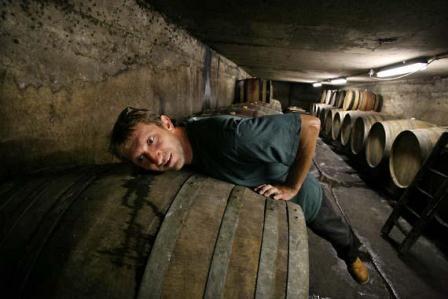
In Champagne, Anselme Selosse (amongst others) has also drawn valuable lessons from Jura winemakers and exposes his wines to oxygen early in the winemaking process as he believes that this makes them more resistant to harmful oxidation in maturity. One of his favourite sayings is that ‘my wines and oxygen are good friends’.
Sue Dyson and Roger McShane in their excellent article on the subject cite Selosse and Patrick Javillier (below) as growers whose wines are positively nourished by exposure to oxygen during vinification.
“Another person who shares this view is Patrick Javillier who wine writer Clive Coates calls “the King of Meursault” – one of the top areas in Burgundy for the production of white wines. He also makes a superb Corton-Charlemagne. However his attitude to oxygen is different to other wine makers in the area. He does not mind oxygen and also sees it as his friend.
He presses his grapes in open tank presses where the juice and the must both make contact with the air and hence with oxygen. Once the wine is in barrels Javillier uses bâtonnage (stirring of the lees) to produce a richer, fuller, more complex wine. However this requires the barrel to be opened and more air to come in contact with the wine. Stirring the lees also allows sulphur dioxide and carbon dioxide to escape, thus reducing their role in retarding the effects of oxygen on the wine. He is willing to sacrifice some of the up-front fruit aromas to make his wines more complex and sturdier for the long haul.
But his quest for exposure to oxygen doesn’t stop there. After almost twelve months in wooden barrels he transfers the wine to cement tanks which allow oxygen to seep through into the wine for up to another five months.”
Sherry drinkers and lovers of Vin Santo, old-style Marsala and Madeira appreciate the deliberate oxidisation of wine. Although Vin Santo winemakers are moving away from the more traditional porous chestnut caratelli (barrels) where oxygen played its role over the lengthy maturation, it is still the oxidative notes in this wine that entice and intrigue.
Expectation colours perceptions of wine. When tasting a vin jaune, a sherry or a Marsala one is within a certain “umami-recognition-comfort-zone”. The oxidative clothes maketh the wine, so to speak. Even the aged white Rioja or the old-fashioned orange/mahogany-hued Châteauneuf-du-Pape will accord to preconceived views about how these respective wines might smell and taste. Encountered in other styles and grapes, however, the oxidative veneer strikes a discord, and the characteristic is judged as a fault. Examples here might be the aforementioned Loire Chenins, the foudre-aged wines of Pierre Frick and the terroir-specific Sancerres of Sébastian Riffault, but it all rather depends whether you think this particular character is an unhappy superimposition or part of the very fabric of the wine. The ox presence divides the critics and sommeliers – Bettane’s attack on the so-styled tarnished wines of certain Loire vignerons exemplifies a kind of dour prescriptiveness that so afflicts the wine industry – his opinion right or right. You might just as well argue that super-controlled ferments, high sulphur regimes and myriad other interventions have falsified wines by allowing inferior vineyards to produce unnaturally polished wines. The results of winemaking should not always be invariably construed as good or bad, right or wrong, oxidised (boo) or clean (divine), but seen as the culmination of a series of complex aesthetic and practical choices.
Back to indestructible wine:
We’re sitting on a bench in Sepp Muster’s winery. Sepp goes the fridge, pulls out a bottle and pours out a couple of tasters into our glasses. Smiling, he asked: “So, when do you think this bottle was opened?”
The wine was a light gold colour, nose restrained with a smidge of reduction. The palate coiled and crunchy. Although it tasted as if it has just been broached, I assumed that the point of the question was to illustrate the wine’s potential to live without preservation. I hazarded: Seven days?
Five weeks, was the response. Cue jaws to descend floorwards. And still plenty in the tank for this particular wine.
Nor was this an isolated frankenwine. One year later, at Andreas Tscheppe’s another fridge door was opened, and another Sauv wine proffered with the same question. Evidently, this was some Styrian schtick. Forewarned, I went for the five weeks decent exposure option, and this time I was correct.
So, these wines have the wherewithal to transcend the rapid ageing process, to take oxygen entirely in their stride. How is this possible? It is all down to grapes, low yields, careful handling and time. The Muster (and Tscheppe) vineyards have special properties and the vines are set up to grow grapes that have fantastic substance. These vines grow on lime soil, composed of solid clay silt, known here as “Opok” which results in warm “dense” wines with intense varietal aroma character. The vines look wild and primitive with their single wire trellising, a reflection of the original method of vine training developed by Sepp’s ancestors’ they rise high along chestnut wood posts and branch out at approximately 1.80 metres height. The one-year canes hang down from the wire as if bending towards the earth. This practice was developed to promote a harvest of physiologically-ripe grapes, the idea being that the energy of the vines goes not into creating a canopy of leaves but into the very substance of the grapes themselves.
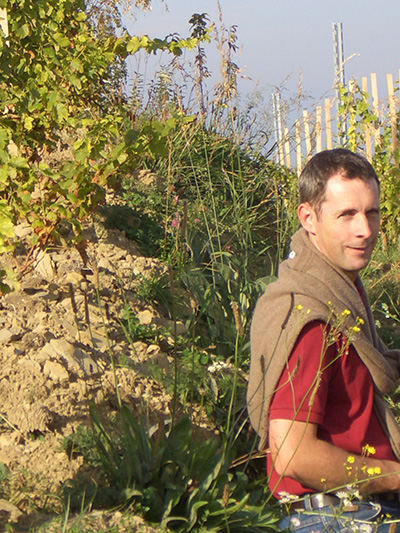
Sepp echoes the simple mantra that we have heard so far that he does not wish to fashion his wines to any specific style, but rather allow them time and space to reach their own individual potential, referenced through terroir, soil character and vintage. It’s the classic hands-on, hands-off approach, emphasising awareness of tradition and the need for observation, seeking healthy vines to yield healthy grapes, and then allowing the wine to make itself in the cellar with the minimum of fuss. As he says with a smile when we enter the barrel room: “I don’t come in here very often.”
The cellaring process is where nature meets time. Spontaneous fermentation (with natural wild yeasts) in large format barrels, no temperature control, naturally occurring malolactic fermentation, nothing added, nothing taken away. The wine is aged (up to two years) to obtain the optimal maturity and harmony of the various flavours.
Phenolics in the juice, the energy of the vine being used not to promote vegetative growth, but to intensify aromas and flavours in the grapes themselves. The wine settles in locally made barrels and rests on its lees, gathering nourishment and strength and seasoned wood tannins, before being bottled without filtration and tarrying awhile. When the wine is poured, it will emerge complete from the bottle, with some reduction.
Last week I revisited various wines from Bozidar Zorjan, whose biodynamically-farmed vineyards lie on the Slovenian side of the border in Styria/Stajerska. These wines are made with grapes and…oxygen. The longer the Zorjan wines are open, the more they find their perfect temperature, the more complete they become. Phenolics do not simply derive from skin contact (there is a varying amount in the Zorjan wines), but something more profound, density in the very juice in which every part seems to touch every other, a liquid that radiates ineffable energy. We witness something similar in the Barral Blanc, an old vines Terret blend, where the juice goes brown and then self-clarifies during the maturation process. Once exposed to air, it seems to be virtually impervious; more than that it becomes more focused the longer it is opened as if deriving nourishment from the oxygen.
We’ve seen this topsyturvydom before in other natural wines. Once, a wine from Alessandro Dettori, when opened, was as brown as a forgotten mouldering apple, an unpalatable brew of sulphides and other “mercaptanny” unpleasantness, destined for the plughole of the kitchen sink. I had read, however, that this wine (and others of its ilk) often presented this odorous carapace initially, and that the miasma might blow off with extensive exposure to air. I didn’t believe, but as an experiment, I poured the brown noxiousness in a wide-brimmed decanter and left it. For three days, sans closure. Sans fridge. When I next looked at it I was gobsmacked. For starters, the colour had changed, the boggy turbidity replaced by a healthy golden glow. This transformation was mirrored in the aromatics, the sulphide fug was now rich golden orchard fruit leavened with salty minerality. The faults had been unfaulted. Truly, there were more things in wine heaven and earth than the text book might allow. This was one in the eye or on the nose, for the anaerobic, “hospital-corner brigade”, whose wine world is governed by microbiological determinism.
It is more important to understand the needs of the individual wine in question, than to recite conventional wisdom about decanting/carafing. But one thing – never confuse oxidation, which can be a noble, enlivening process, with oxidisation.
A Wine is a Wine is a Wine
Many in the trade are in jobs where they are ultimately responsible to the end product user – a spade should therefore be a spade – a Sauvignon identifiably a Sauvignon – there should be square wines for square times. But not all drinkers are square.
It is also presumptuous (but it happens in all walk of life where critics critique) to believe implicitly that one knows better than the artisan-vigneron. Just like drinkers and wine critics, artisan winemakers are certainly not infallible, but their actions in the vineyard and winery determine the final individuated personality of the wine. And the wines are usually the way they are for many reasons. Decisions, such as topping or not topping up barrels, how much sulphur to use, to push for malo or not, to let fermentation take its natural course, in other words, all the physical choices of winemaking, will influence the development of the wine itself. For me, however, the paradigm of good winemaking is knowing when to step aside and leave the wine to its devices.
When I see the fault-sniffers, reduction hounds and oxidation haters reducing (no pun intended) wines to the sum of the aromas they’re not sure about, I know that wine tasting has become a cognitive demi-science and lacks an emotional, instinctive dimension. One hears stories of growers like Teobaldo Cappellano who banished journalists from his cellars because of what he perceived as the invidious practice of marking wines rather than tasting the wines for what they were.
The Year of the Ox
I prefer to talk about flaws rather than faults. Faults do exist, of course, but they are terminal and devour the wine. Flaws may serve to highlight other aspects of the wine; their imperfections are part of the whole and are often beautiful in themselves.
“Oxidized flavours can be difficult if you’re not familiar with them. All the fresh fruit aromas and tastes diminish, making way for cooked or candied fruit; nutty, yeasty flavours; and a ton of complexity. Fans of these wines find their individuality and character is unsurpassed and, because of that, they are some of the most fascinating and compelling wines in the world.” Joe Campanale (Owner of Anfora Restaurant, New York)
Oxidative wines will not be everyone’s cup of slightly browning tea. But there is no reason to get aerated! Horses for courses, and all that. And it all depends on the wine as well, naturally. The wines do have something different about them and for those who have become attuned to the aromas, flavours and textures they offer a mixture of challenge, excitement and immense pleasure.


